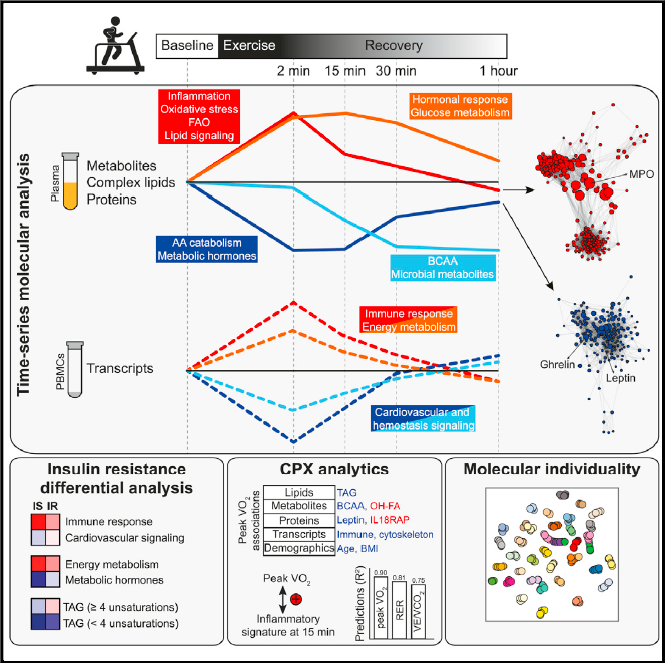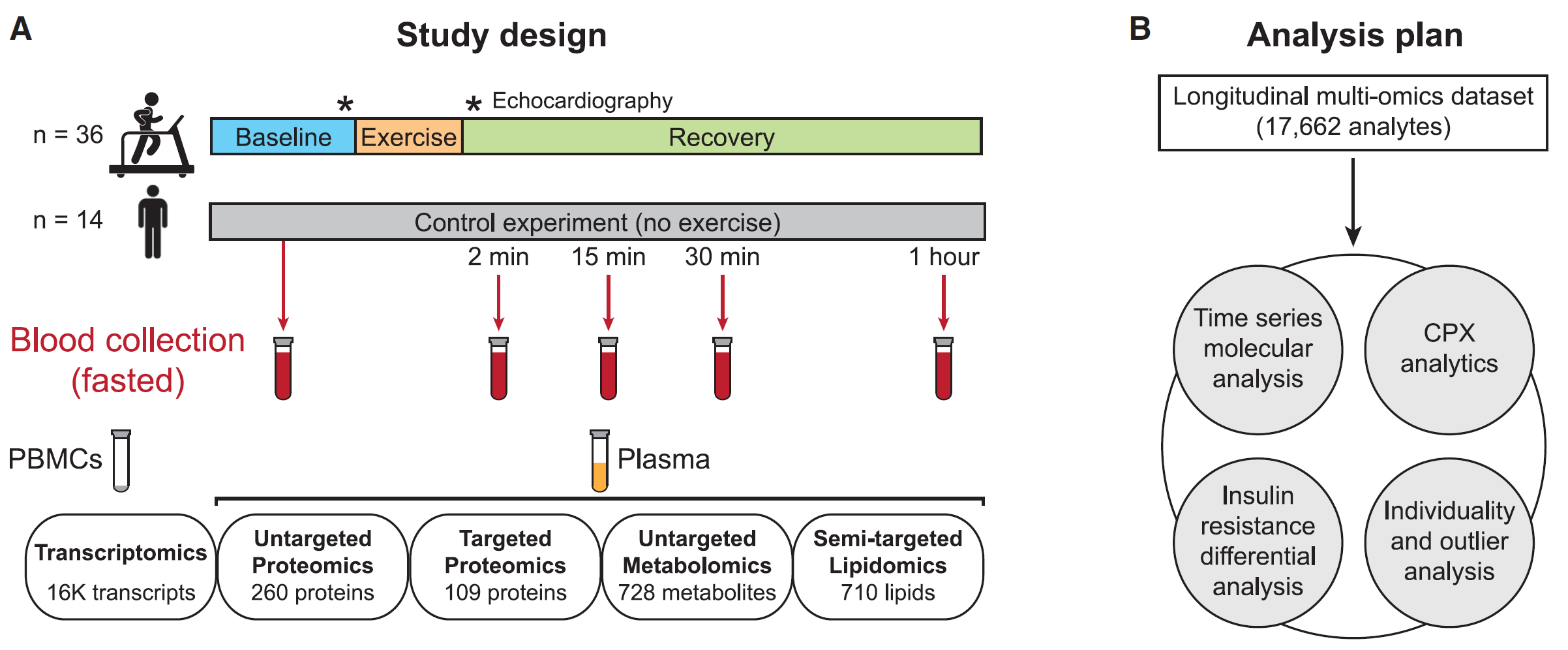2020-06-08 by Quick Biology Inc.
Personal Health Information Management (PHIM) is to stay healthy and combat illness, it includes sleep, diet, and exercise management. Wearable devices such as a smartwatch, wristband, have been popular as they track our sleeping, heart rate, and activity, provide wearers with health and fitness recommendations. Today, we are going to talk about molecular dynamics (not heart rate, not calories burned) in our acute physical activity.
In recent Cell, Stanford University clinical professor Dr. Haddad (https://profiles.stanford.edu/francois-haddad) and research professor Dr. Snyder groups (http://med.stanford.edu/snyderlab.html) performed longitudinal multi-omic profiling of plasma and peripheral blood mononuclear cells including metabolome, lipidome, immunome, proteome, and transcriptome from 36 well-characterized volunteers, before and after a controlled bout of symptom-limited exercise (Fig.1-2, ref1). These molecular responses in acute exercise provided a great resource for developing prediction models, which can reveal potential resting blood-based biomarkers of peak oxygen consumption. Interestingly, some orchestrated processes were reversed in insulin-resistant participants, which might be particularly relevant to the current epidemic of obesity and diabetes mellitus.
Figure 1: Graphical Abstract for the molecular level study of acute exercise (ref1). The study performed longitudinal multi-omic profiling of plasma and peripheral blood mononuclear cells including metabolome, lipidome, immunome, proteome, and transcriptome from 36 well-characterized volunteers, before and after a controlled bout of symptom-limited exercise. Time-series analysis revealed thousands of molecular changes and an orchestrated choreography of biological processes involving energy metabolism, oxidative stress, inflammation, tissue repair, and growth factor response, as well as regulatory pathways.

Figure 2: Overview of study design (ref1). (A) Overview of the study design including an acute bout of exercise (symptom-limited cardiopulmonary exercise [CPX]), cardiovascular phenotyping, and
longitudinal multi-omic profiling from blood specimens. PBMCs, peripheral blood mononuclear cells. (B) Analysis plan.

Key Highlights:
- Time-series analysis reveals an orchestrated molecular choreography of exercise
- Multi-level omic associations identify key biological processes of peak VO2
- Prediction models highlight resting blood biomarkers of fitness
- Exercise omics provides insights into the pathophysiology of insulin resistance
Quick Biology is able to help you in longitudinal multi-omic profiling projects, especially in DNA, RNA profiling, epigenetic profiling. Find More at Quick Biology.
Ref:
1. Wu, S., Moneghetti, K. J., Chaib, H., Haddad, F. & Snyder, M. P. Article Molecular Choreography of Acute Exercise ll ll Article. 1112–1130 (2020). doi:10.1016/j.cell.2020.04.043



